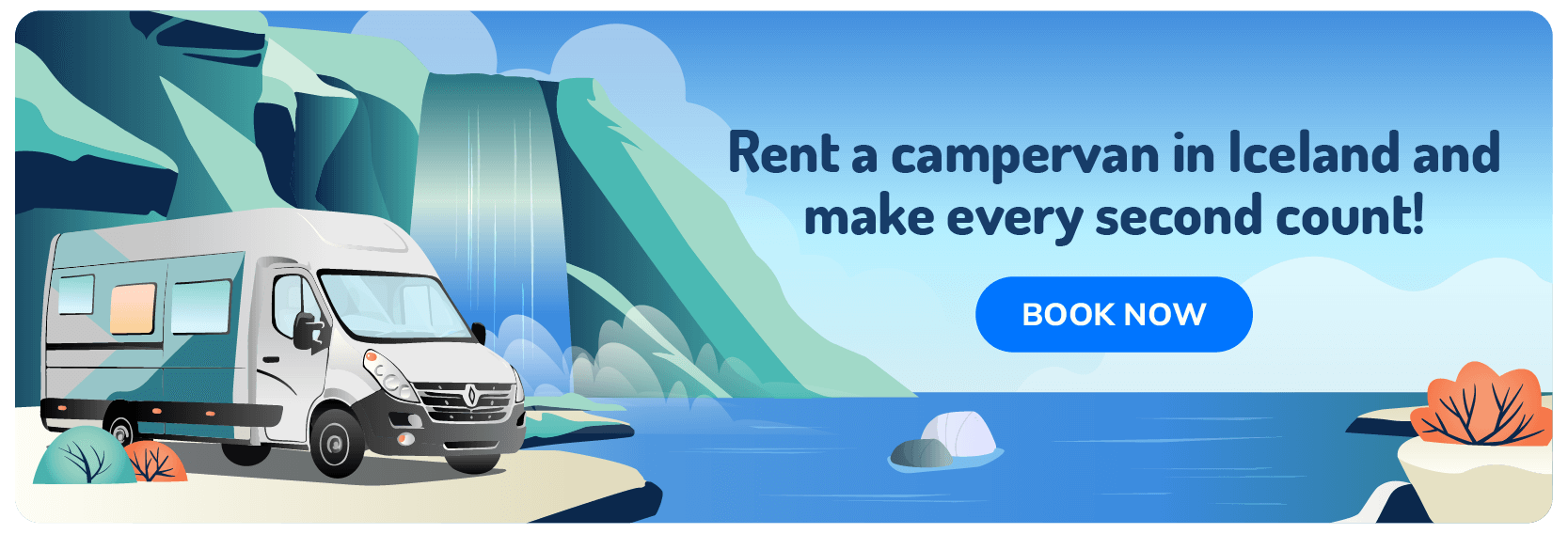Traveling around the Land of Fire and Ice is the ultimate adventure. With all sorts of contrasting and almost other-worldly landscapes, the best way to explore the island is via a motorhome rental. Our guided tours and hotel stays may have their allure, but experiencing vanlife in Iceland adds another dimension to an already unique experience.
This article will tell you all about the ins and outs of vanlife in Iceland, why it’s the best way of traversing our incredible country, how to plan and prep for your trip, and what to expect from your motorhome road trip around the island. So, without further ado, let’s dig into what vanlife in Iceland is all about.
Why Choose Vanlife in Iceland?
Vanlife is not only a unique way of exploring a country, but it also has a number of perks when it comes to traveling. These include the following:
It Gives You Incredible Flexibility and Freedom.
Unlike guided tours or traditional road trips where you have to adhere to strict schedules and check-in times at pre-booked accommodations, a motorhome allows you to be in control of your own time and itinerary, especially since you can use accommodation options that don’t always require booking well in advance.
You also don’t have to wait for your guided tour to spot the Northern Lights. If someone’s spotted them, you can immediately jump in your van and hunt them yourself. That’s if you’re not already watching them dance across the sky, since you can park yourself in the most beautiful and remote regions of the island without any light pollution.
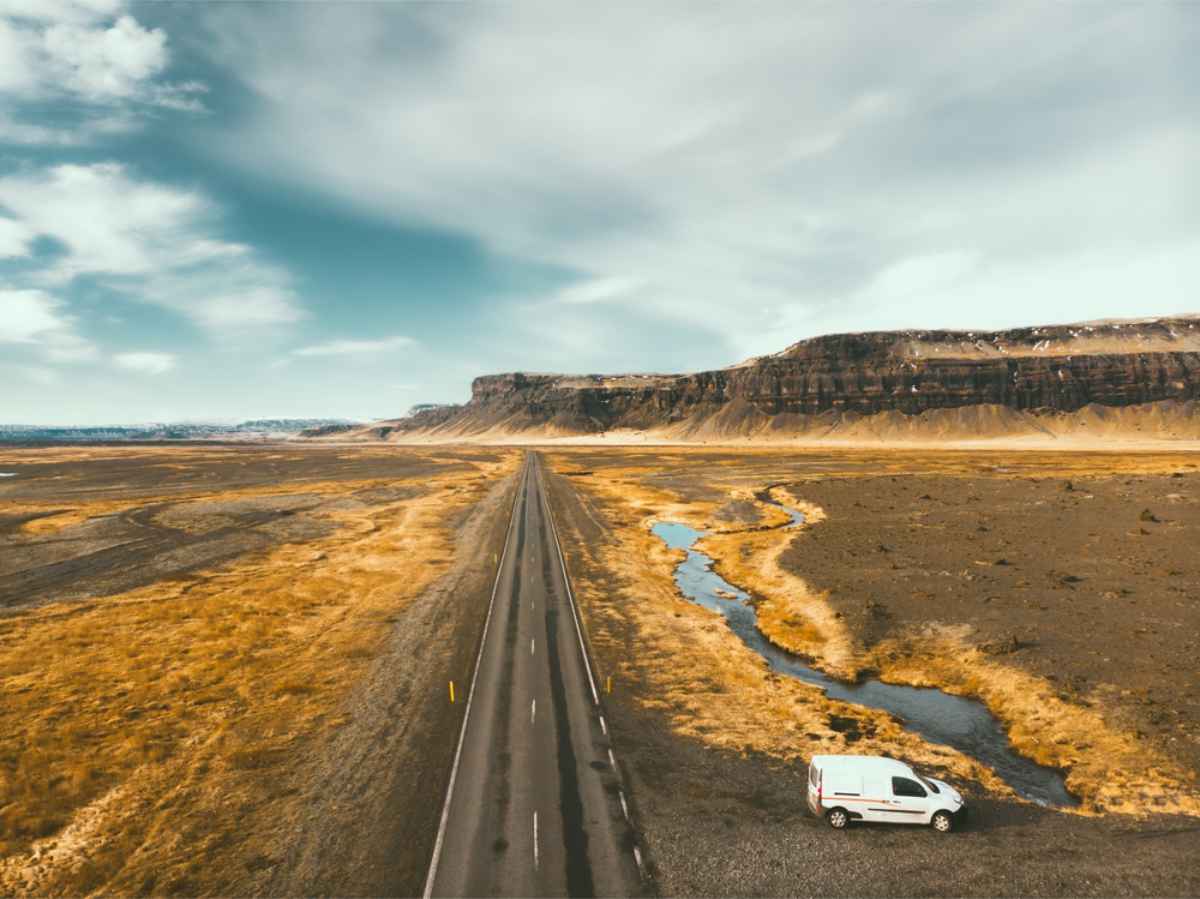
It’s Super Cost-Effective.
You can save on tons of expenses with a motorhome. Accommodation is usually the most expensive part of any trip. Add on your transport, and things can get expensive pretty fast.
With a motorhome, you have both your transport and accommodation in one, and can even take advantage of our super-affordable campsites. Add on a few discounts from your rental agent and some Camping Card savings, and you’re truly in for the most budget-friendly holiday of a lifetime!
It Gets You the Closest to the Action.
Our campsites are not just super affordable; they are the best way to truly immerse yourself in the Icelandic landscape and get you as close as possible to some of our most spectacular sights (take Skogar Campsite with its breathtaking views of Skogafoss Waterfall, for example).
It Allows You to Go Camping Without Having to Turn Into Bear Grylls.
Traveling in a motorhome allows you to go camping with all your creature comforts. You no longer have to set up camp, unpack, pack up, try to stay warm, etc., as you would in a traditional camping setting.
You Can Go Camping Earlier or For Longer.
Because you are not so exposed to the elements in a motorhome, it allows you to go camping earlier than traditional campers could since you don’t have to wait for the most pristine weather conditions or all the ice and snow to melt after the winter months.
In the same sense, you can still go camping even when the first snow has fallen and the first ice has formed on the ground. These little “tasters” of what’s to come with our harsh winter season won’t bother you at all like it will your neighbor trying to keep his canvas tent insulated and hammer poles into the frosty earth.
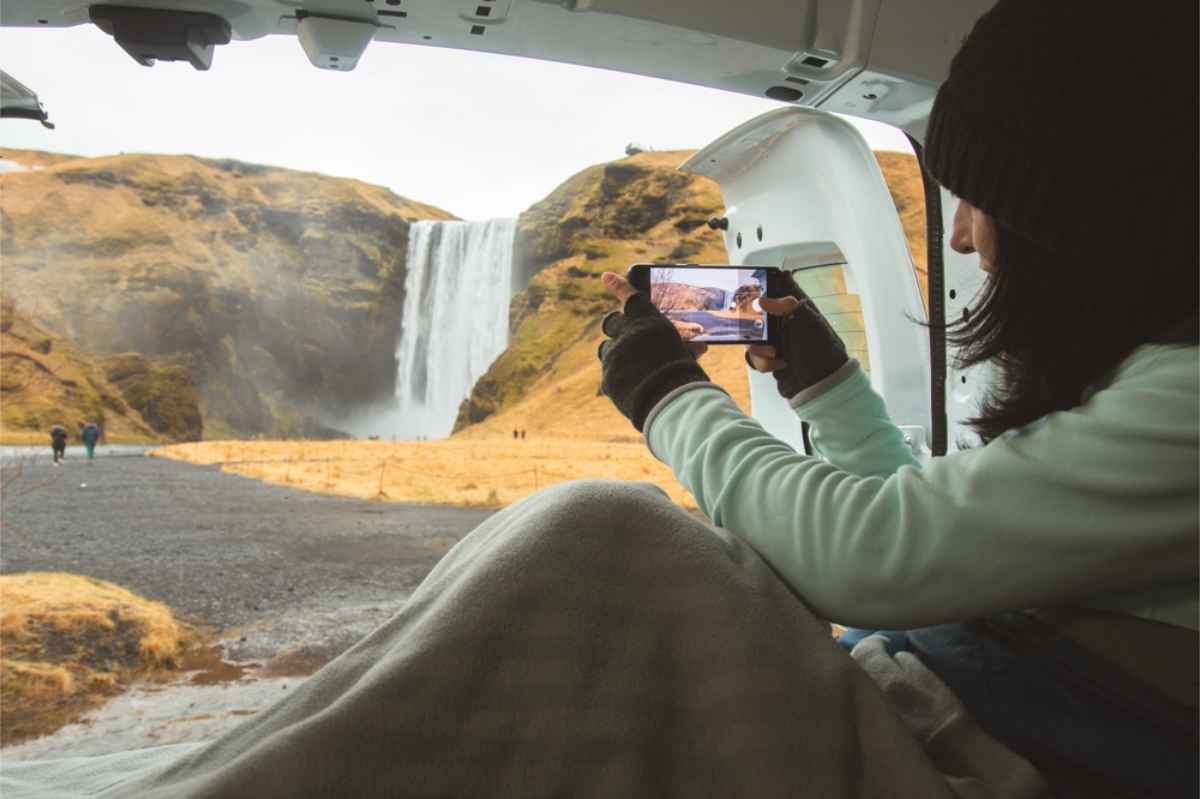
Choosing the Right Camper: Motorhome vs. Campervan Rentals in Iceland
Although we often talk about campers and motorhomes interchangeably, there are actually significant differences between them. Which you end up going with will be up to you and your needs and requirements. Here’s what you need to know:
Small Campervans: Budget-Friendly and Easy to Drive
Who it works best for:
- Solo travelers
- Couples
- Those on a tight budget
- Those planning on sticking to the cities and towns
- Those planning on taking only short excursions on our well-maintained paved roads
Their General Features:
- Bed
- Small stove top
- Some storage space
Pros
- Their compact size makes them perfect for zipping in and out of parking spaces and driving on narrower roads.
- They are incredibly fuel-efficient.
- They are some of the cheaper rentals when it comes to day rates.
Cons
- Limited storage space.
- Can begin to feel a bit cramped after a while (hence why they’re perfect for shorter excursions).
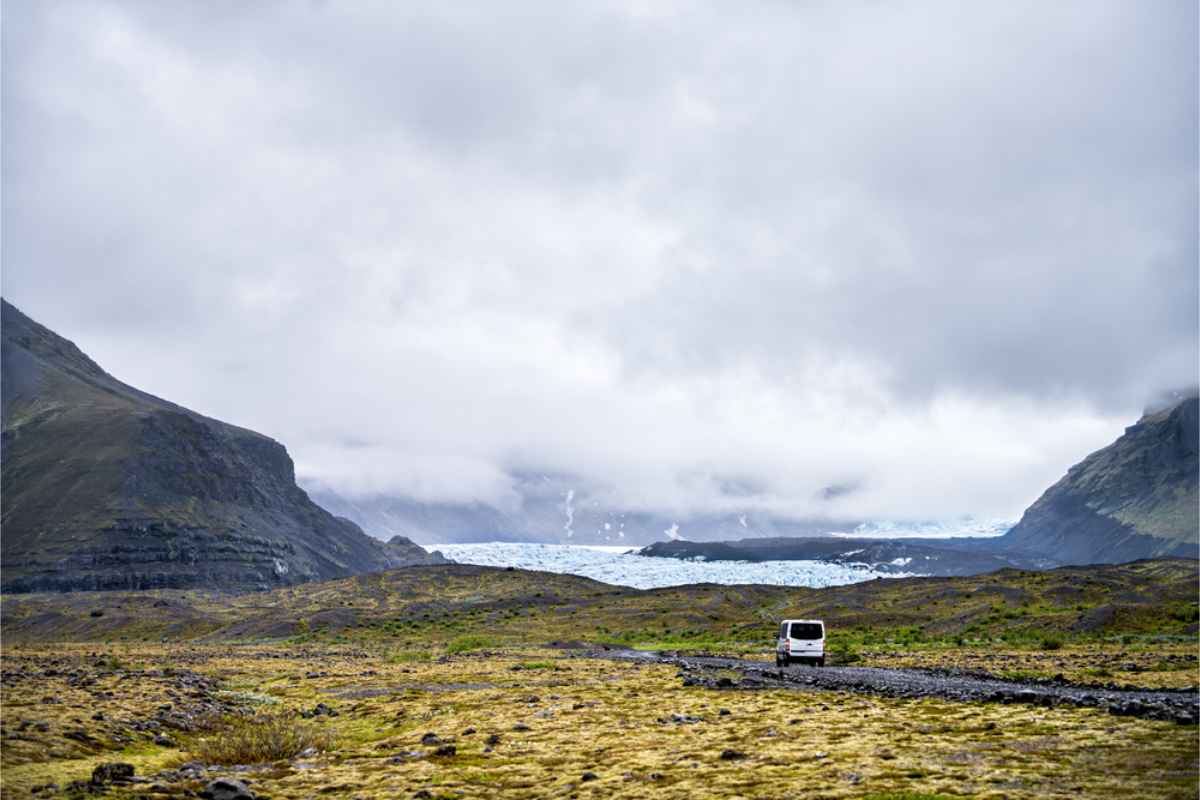
4x4 Campers: For Highland Adventures and Off-Roading
Who it works best for:
- Thrill seekers (you’re already planning on taking some of our “roads less traveled”)
- The explorers at heart (you don’t really know where you’ll be traveling yet – you plan on going wherever the adventure takes you)
- Those planning on traveling the F-roads (this is a legal requirement for these roads, mostly found in the Highlands and the Westfjords)
Their General Features:
- Bed
- Small stove top
- Some storage space
- Upgraded tires for more challenging road conditions
Pros
- You can rest assured that these bad boys can explore most of the island since you’ll be allowed to drive on most roads, including the F-roads.
- You don’t need to worry too much about road conditions or even river crossings since these guys are made to traverse the rougher and tougher roads with plenty of clearance.
- It gives you the freedom of not having to plan so much. Want to explore the rarely used gravel road? Do it! Only want to drive around in the city? Do it! Its 4x4 features won’t stop you.
Cons
- Can feel like a bit of overkill when driving in the cities and towns and well-maintained paved roads.
- These are slightly more expensive when it comes to their fuel consumption.
- These are slightly more expensive rentals in terms of their day rates.
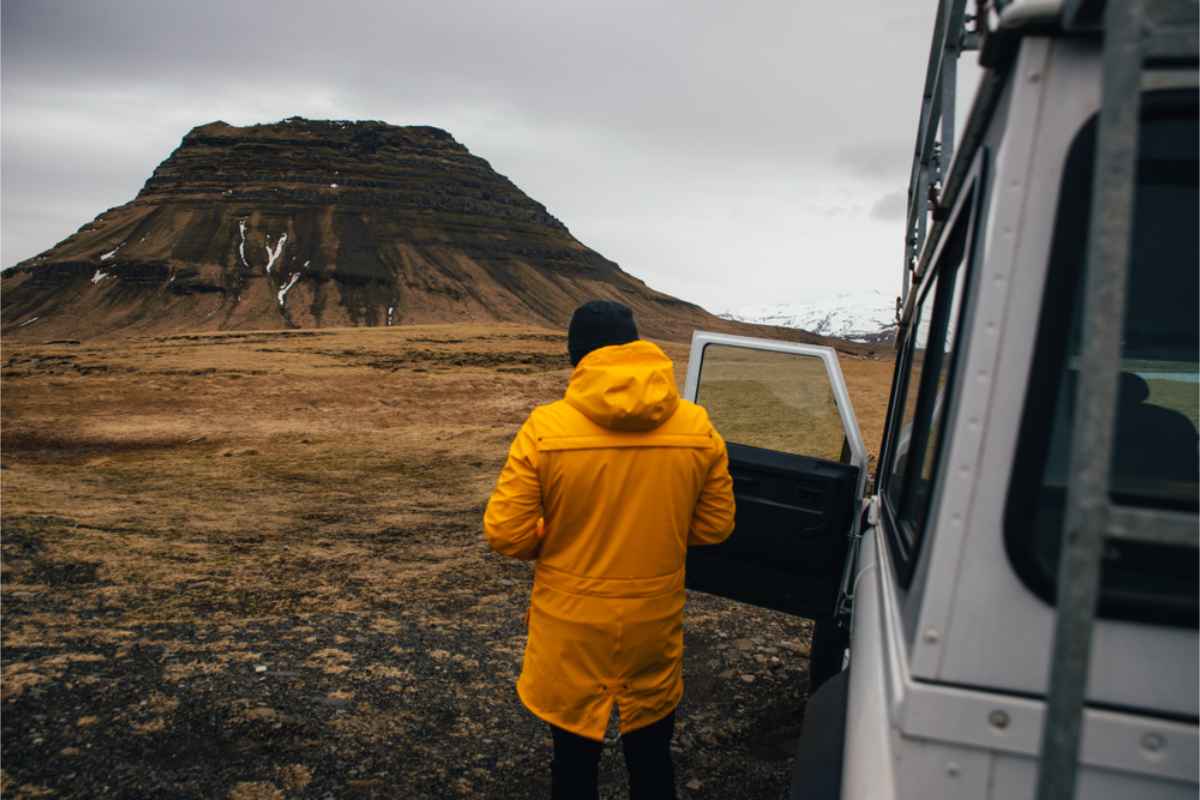
Full-Size Motorhomes: Comfort and Space for Longer Trips
Who it works best for:
- Families
- Larger friend groups
- Those who simply prefer a bit more space
- Those who want their little “luxuries”
- Those planning on longer road trips or camping stays
Their General Features:
- Beds (often a double or queen and then 2 singles, depending on the option you choose)
- Small stove top
- Little Kitchenette
- Bathroom with shower and toilet (depending on the option you choose)
- More storage space
- Upgraded tires for more challenging road conditions (depending on whether you choose a 4x4 version)
Pros
- There’s no way you can ever feel cramped in one of these; there’s plenty of space to comfortably move around.
- You never have to worry about the amenities and facilities as camping spots; as long as they can hook you up with water, electricity, and a dumping site, you’re in the pound seats.
- You can pack to your heart’s content! There will be plenty of space to unpack your clothes and other items (as long as you don’t go completely overboard, of course).
Cons
- Due to their size, they can be tricky to navigate and definitely make for a challenging trip through town, to the shops, or to our narrower mountain roads.
- These are not very fuel-efficient.
- They are also some of the most expensive rentals when it comes to day rates.
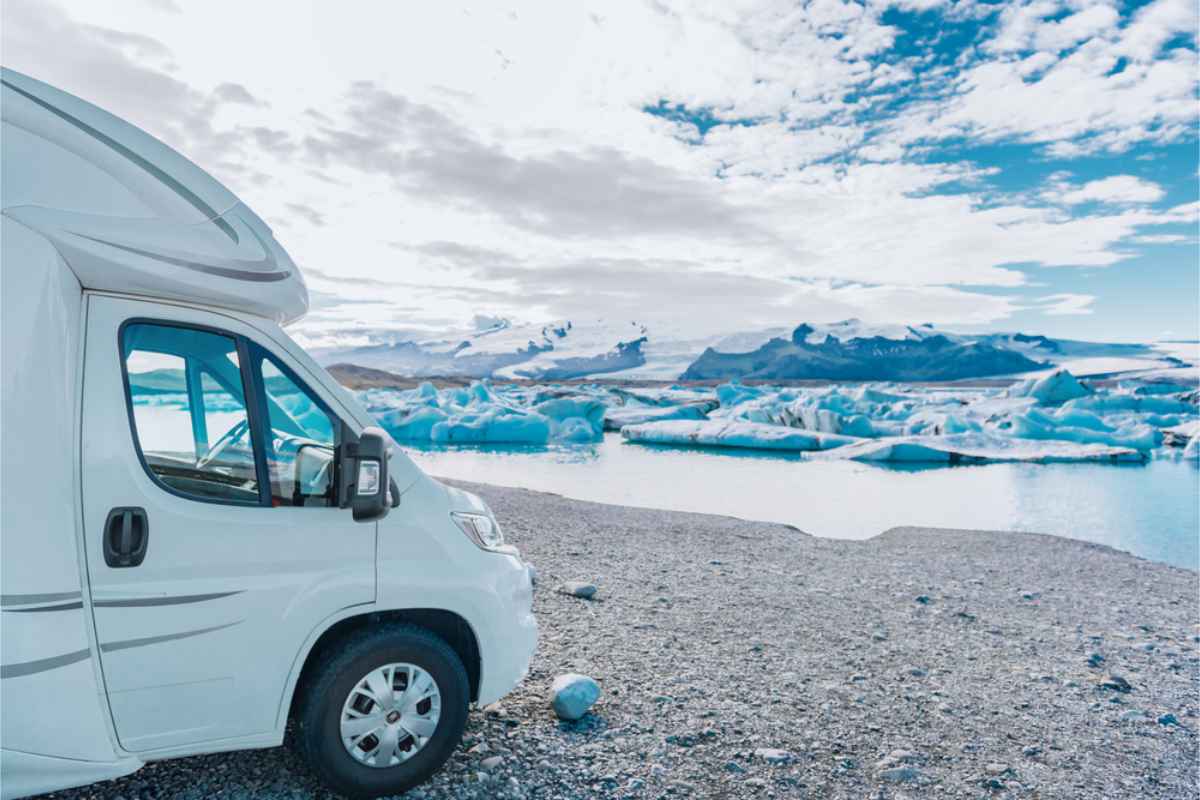
Planning Your Vanlife Route: Must-See Destinations & Hidden Gems
A unique trip around the country requires a few unique sights and attractions, and you’ll find plenty of those in the Land of Fire and Ice. These are just a few routes and attractions you can consider adding to your trip itinerary:
The Classic Ring Road Adventure
The Ring Road (also known as Route 1) is one of the island’s most important roads. As a paved and well-maintained circle road around the island that connects most cities and towns with one another, it’s an incredibly important piece of infrastructure, logistically as well as a popular road trip route. A Ring Road road trip itinerary will usually include the following:
The Golden Circle
The Golden Circle is similar to the Ring Road in that it’s a loop road going around the southern part of the country (but obviously not nearly as big as the Ring Road that wraps around the entire island).
Just like the Ring Road, it’s also incredibly famous for its popular sights and attractions. These include Thingvellir National Park (where the first parliament in Iceland came together), Geysir Geothermal Area, and Gullfoss Waterfall (the second tallest waterfall in the country).
The South Coast Wonders
Who doesn’t like cruising along the coast?! Well, our coast boasts some of the most spectacular waterfalls and black sand beaches! These include Seljalandsfoss (otherwise known as the waterfall you can walk behind), Skogafoss Waterfall, and Reynisfjara (a beautiful black sand beach not to be trifled with due to its sneaker waves and strong currents).
The East Fjord Charms
The East Fjords are essentially known for two things: its breathtaking fjords and the quaint and picturesque little villages one can find nestled alongside them. Seydisfjördur and Djupivogur are just a few worth mentioning.
The Northern Highlights
The northern part of the country has a lot to offer, from the vibrant city life of its capital city, Akureyri, and whale-watching expeditions in Husavik, the so-called whale capital of Iceland, to Lake Myvatn and the healing waters of the Myvatn Nature Baths.
Exploring the Westfjords by Camper
The Westfjords is one of our more remote regions here in Iceland and is often referred to as our untamed wilderness. Since it’s more remote with a bit more rugged terrain and unpaved roads, you generally find much fewer visitors exploring the area (making it a great option for those who try to avoid crowds and experience nature’s beauty in solitude.
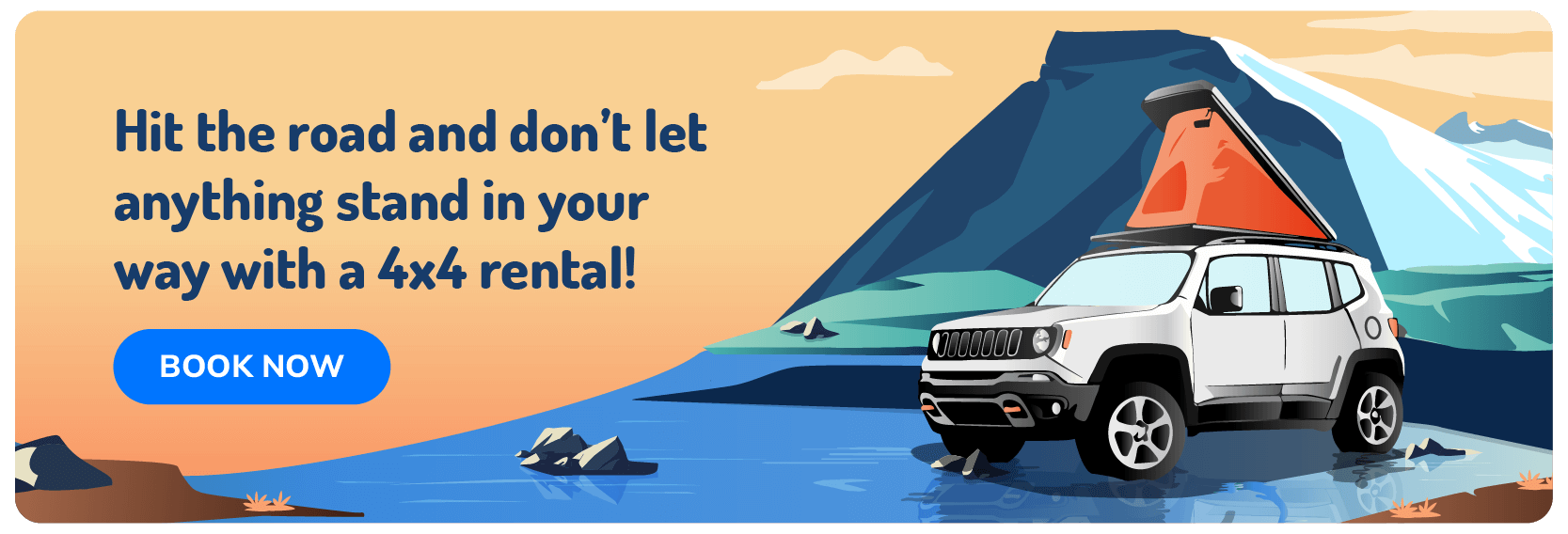
Just remember that the Westfjords is characterized by its steep cliffs and towering mountains with narrow roads winding their way through the landscape, many of which are unpaved. So, while this region makes for an extremely rewarding trip, you’ll need to come prepared. Some of the Westfjord’s most famous attractions include:
- Dynjandi Waterfall – Help us settle years of debate when visiting this incredible tiered waterfall cascading down a height of 100 meters! While some say it resembles a bridal veil, others say it looks just like a wedding cake. Either way, this wedding-themed waterfall is a must-see!
- Raudasandur Beach – Iceland is renowned for its black sand beaches, which is exactly why Raudasandur Beach is so special. Here, you won’t find any black sand. This 10-kilometer stretch of sand ranges from yellow to red. Definitely a surprising shift from the norm.
- Isafjördur – This is probably the most famous town in the Westfjords. Although not very big, it’s an absolute hub of culture, from its various art displays to its famous rainbow path leading up to the church.

Off-the-Beaten-Path Stops Worth Visiting
We already touched on one of our most remote regions in Iceland that’s off the beaten path. But there are a few other spots that offer similar tranquillity and solitude – all with very unique features and characteristics. These include:
Siglufjordur Village
Siglufjordur is Iceland’s northernmost town, with a population of just 1300 people. It’s hard to believe that this picturesque little fishing town next to a fjord is actually slowly coming to its end. From the 1950s with over 3000 permanent residents, it’s steadily declining year after year. But after visiting and seeing how beautiful it is here, you may be tempted to stay.
Hveravellir Geothermal Pool
Hveravellir’s pool may look like one of our natural hot springs because of its rugged appearance, but it’s man-made. Made in 1950, it incorporates the warm waters from the geothermal river nearby. Temperatures in the pool are controlled due to the incoming warm water being a scorching 80 to 90 degrees Celsius.
So, with a little help from man, the water can range from 18.6 to 39.3 degrees Celsius. Of course, the geothermal pool should not be confused with the geothermal area at Hveravellir, where a quick dip will be your last.
Hornstrandir Nature Reserve
Hornstrandir Nature Reserve is actually found in the Westfjords (the northwest, to be exact) and stretches across 580 square kilometers (220 square miles). If you’ve ever wanted to see an Arctic Fox (our only - and most ferocious - predator here on the island that looks like a fluffy white Pomeranian), then Hornstrandir should be your go-to. That’s because it’s the only place on the island where they are protected, and absolutely no hunting is allowed.
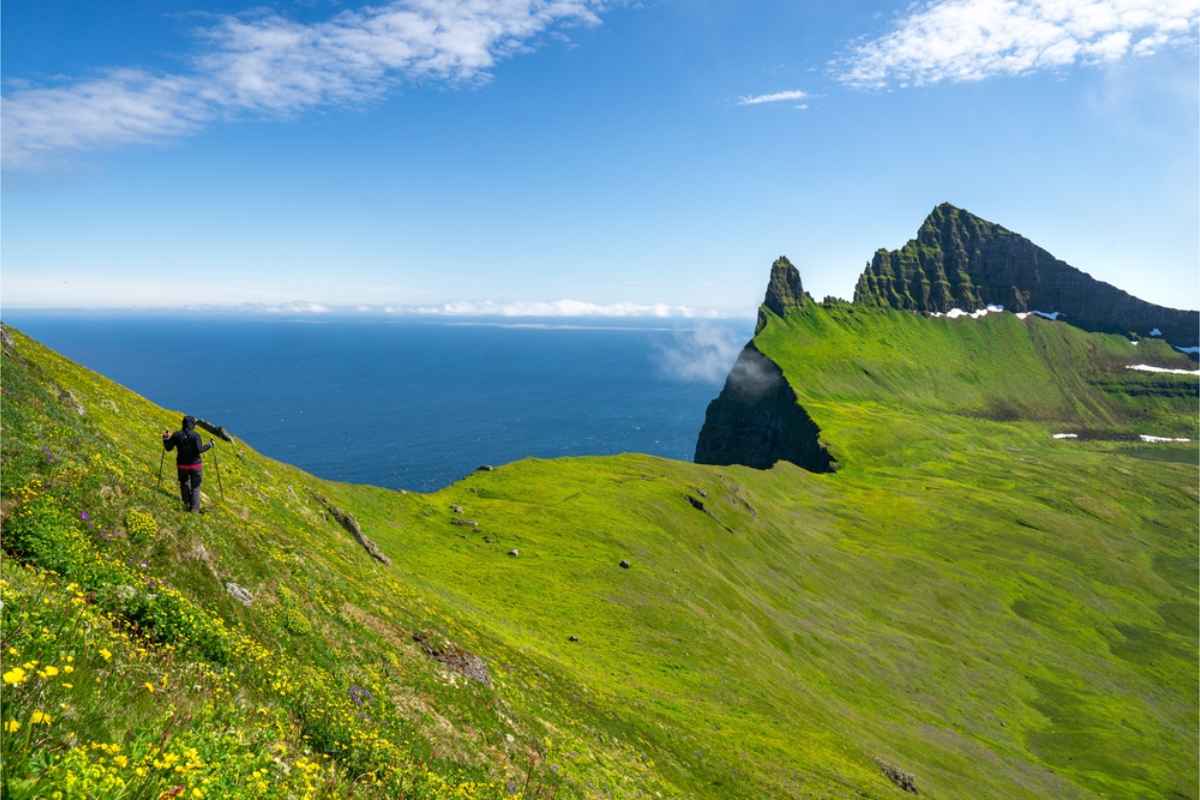
Landmannalaugar
Landmannalaugar can be found in Iceland’s Highlands and makes for quite an impressive sight. A landscape of geothermal hot springs gives it a mineral-rich discoloration, and the rhyolite-rich mountains also turn them into vibrant multi-colors. If you’re an avid hiker, you’ll be glad to know that there are many hiking trails here that allow you to traverse this interesting landscape.
Grotta Nature Reserve
Grotta is an incredible place that can only be compared to a little island sitting off the Seltjarnarnes Peninsula. It connects to the mainland by only a thin rocky ridge that completely disappears underneath the water during high tide.
One of its most famous landmarks is the lighthouse, initially built in 1897 and then rebuilt in 1947, the same year it was officially named a nature reserve. A visit to Grotta is truly a once-in-a-lifetime experience.
Vanlife Essentials: Packing Smart for Iceland’s Weather and Terrain
Vanlife in Iceland has different packing criteria compared to your average road trip. Here’s what you need to keep in mind:
In Terms of Clothing
We have a local saying that goes, “You can experience all four seasons in a day in Iceland,” so you’ll need to be prepared for anything when visiting. The best way to do that is by packing clothes that you can layer on top of each other. This way, you’ll always be able to put things on and take things off.
We always tell visitors to bring waterproof clothing and waterproof hiking boots along with a raincoat. This is not because we want you prepped for the ultimate rainstorm; it’s because these waterproof items come in handy in a myriad of situations. This includes going hiking when you need to traverse muddy trails and cross streams and avoid getting absolutely soaked as you stand in awe at one of our powerful waterfalls that will have you drenched within minutes due to its mist and spray.
Irrespective of the season, we always advise you to bring some thermal underwear and thick woolen socks along. This is because these items can come in very handy when going glacier hiking (an activity that’s actually open all year round).
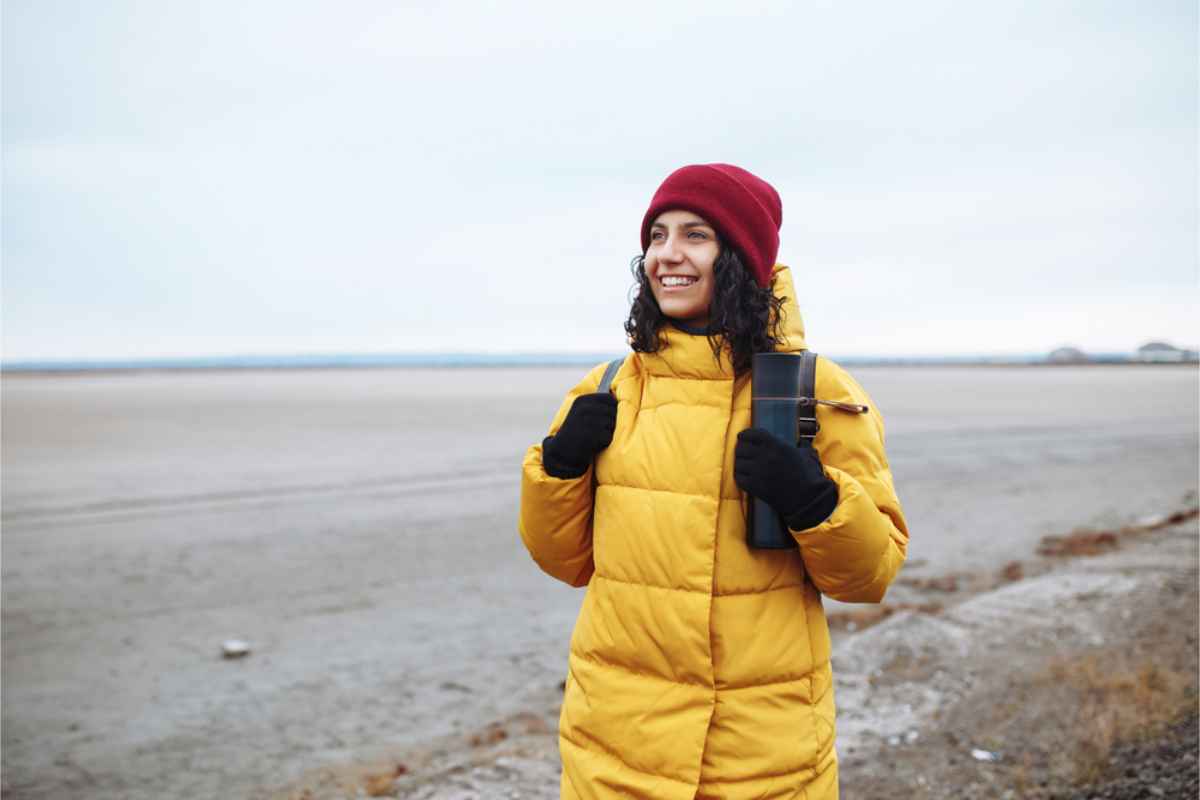
Kitchen and Cooking Must-Haves
Luckily, when you rent a motorhome in Iceland, your rental agent would have already sorted out all the ins and outs of the kitchen and the essential appliances and cooking utensils. But there are a few things that remain your responsibility and could come in handy:
- Refillable water bottles – Iceland boasts some of the purest water in the world straight from the tap! So, before you waste your money on bottled water, just get a refillable water bottle for each person in your party and top up as you go.
- Food containers – The cheapest way of eating on the island is by cooking your own meals, so food containers can come in very handy when doing meal prep and keeping leftovers fresh. It also makes you part of the sustainability solution here on the island, since it’s always a good idea to buy fresh and without plastic packaging.
- Non-perishable food items – While our fresh local ingredients are simply the best, you won’t be able to store them indefinitely. Keep a few non-perishable food items such as pasta, food in tin cans, and nuts in your camper “pantry.” That way, you’ll always have something to fall back on when you forget to buy something. And if you ever find yourself in a situation such as a vehicle breakdown, you’ll have extra rations to keep you going while you wait for assistance.
Tech & Navigation
There are a few things that might come in handy here in Iceland that might not be so obvious to you:
- If you’re going road-tripping, most will ensure they have a GPS or some sort of navigation app on their mobile. But please also ensure you have a few downloaded offline maps and a couple of hard copies with you. That’s because tech and signals can fail, and you don’t want to find yourself lost without them (always have your backups ready and waiting!)
- Bring plenty of chargers and power banks. What many don’t know is that the cold in Iceland actually makes batteries deplete faster.
- A flashlight is probably on most people’s packing list when going road-tripping and camping, but we suggest bringing headlamps. Not only are these incredibly handy when you need to use both hands, but they’re also ideal for exploring lava caves or ice caves.
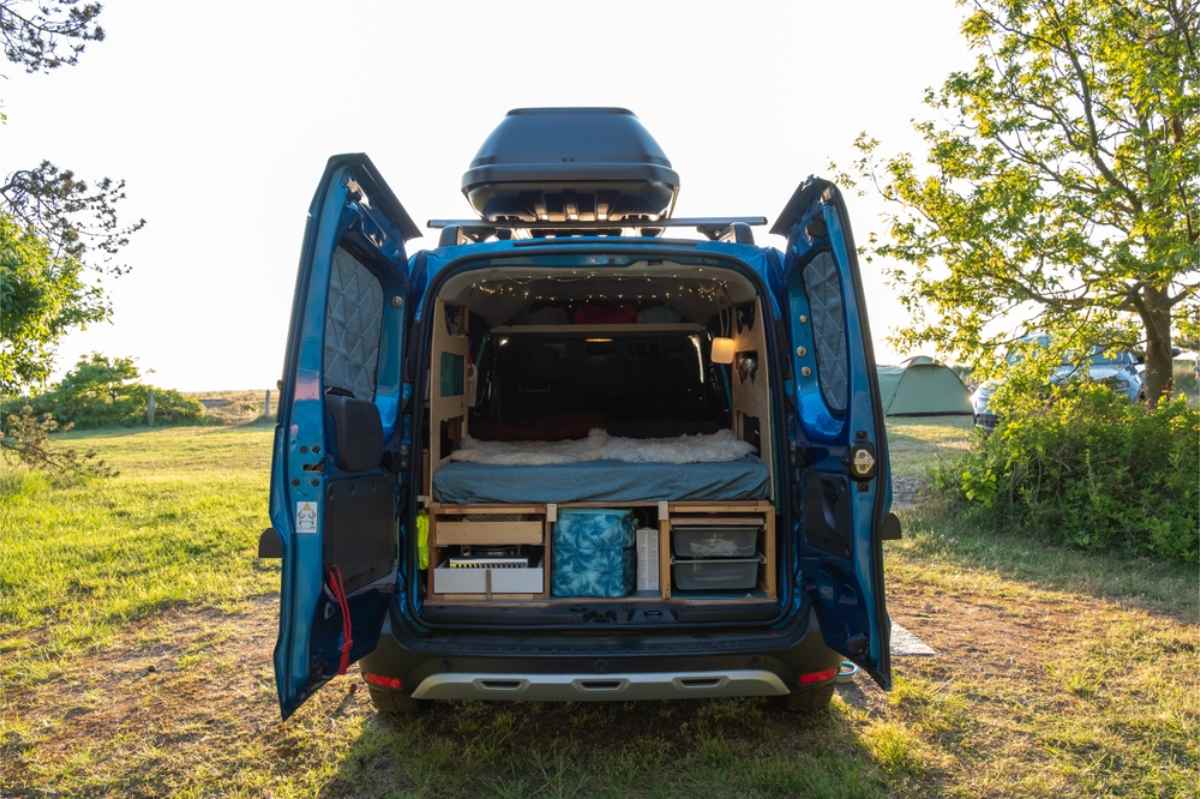
Where to Sleep? Understanding Campsites, Wild Camping & Regulations
The rules around motorhome camping have changed, so the following information will help you get a good night’s rest and keep you on the right side of the law:
Best Campsites for Vanlifers in Iceland
The following are some of the best campsites for vanlifers to stay at:
- Reykjavik Eco-Campsite
- Camp Egilsstadir
- Skaftafell Campground
- CJA Campsite
- Uthlid Campground
- Gesthus Selfoss
- Hamrar Campsite
- Vogar Campsite
- Hlid Campground
- Husafell Campsite
Can You Wild Camp in Iceland? Legal Restrictions & Alternatives
Wild camping in a campervan is no longer allowed here in Iceland. You’re only allowed to stay overnight at a designated camping spot or overnight parking spot. The only way you’ll ever be able to overnight on someone’s private property is if you have their explicit permission and don’t overstay your welcome (no stays longer than 48 hours!).
How to Find Overnight Parking and Services for Campers
There are many sites and apps you can use here in Iceland that will send you in the right direction when it comes to overnight parking and camping spots. Some of the best are:
- Tjalda.is
- Park4Night
- Nordcamp
- Parka
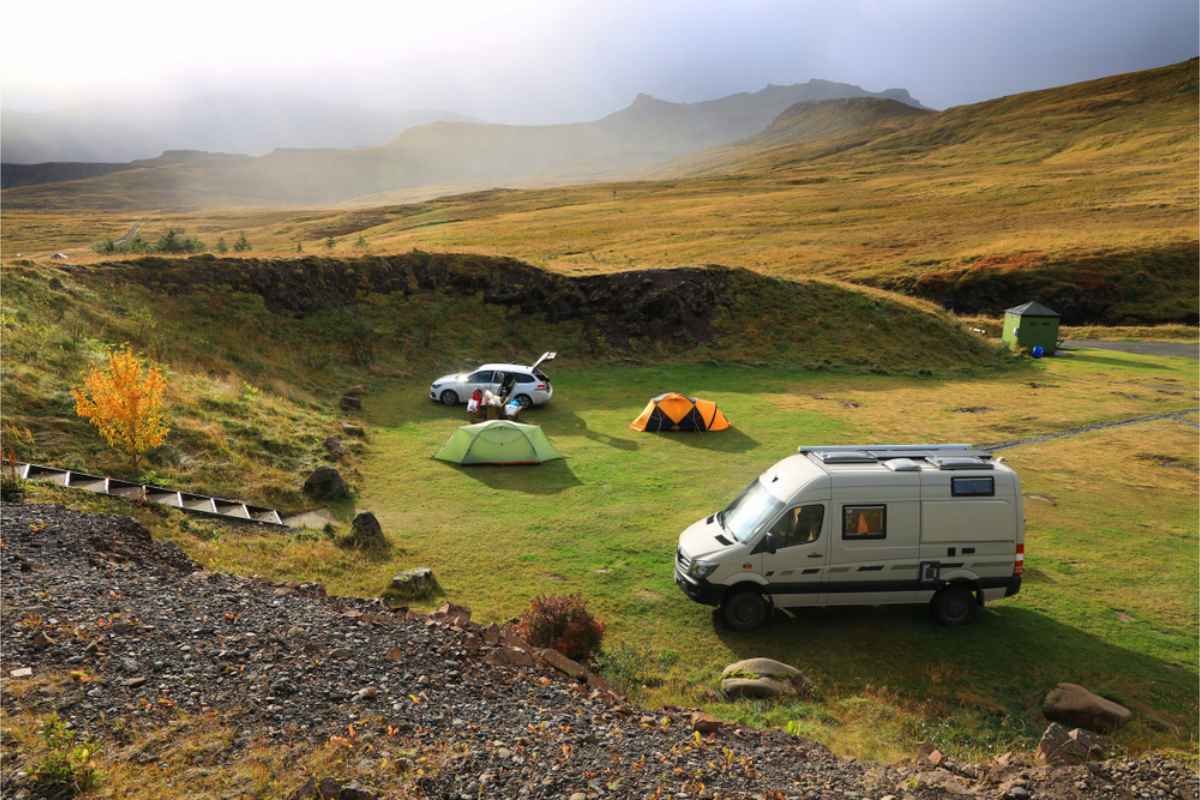
Budgeting for Vanlife in Iceland: Fuel, Food & Campsite Costs
Iceland can be expensive to those not living and earning within its boundaries, making cost-effective trips with proper planning and budgeting even more important. Here’s what you need to consider when it comes to costs:
Camper Rental Prices: What to Expect & How to Save
Camper rentals can vary based on the type of camper you go for, but they generally tend to be in the following price range:
Compact Camper:
Between 14 060 ISK (+/- $107.83/€97.17) and 42 700 ISK (+/- $327.48/€295.09) (the latter usually includes all sorts of additional extras)
4x4 Camper:
Between 12 900 ISK (+/- $98.93/€89.15) and 27 900 ISK (+/- $213.97/€192.81)
Motorhome:
Between 33 500 ISK (+/- $256.92/€231.51) and 53 000 ISK (+/- $406.47/€366.28)
4x4 Motorhome:
+/- 38 500 ISK (+/- $295.27/€266.07)
Saving a few extra bucks on your van rental is easy. Avoid peak season (with its peak season prices), and don’t go for the pricier, top-of-the-line luxury model if you don’t really need it. Remember: the bigger and more luxurious the model, the bigger the price tag attached and the less fuel-efficient it’s gonna be.
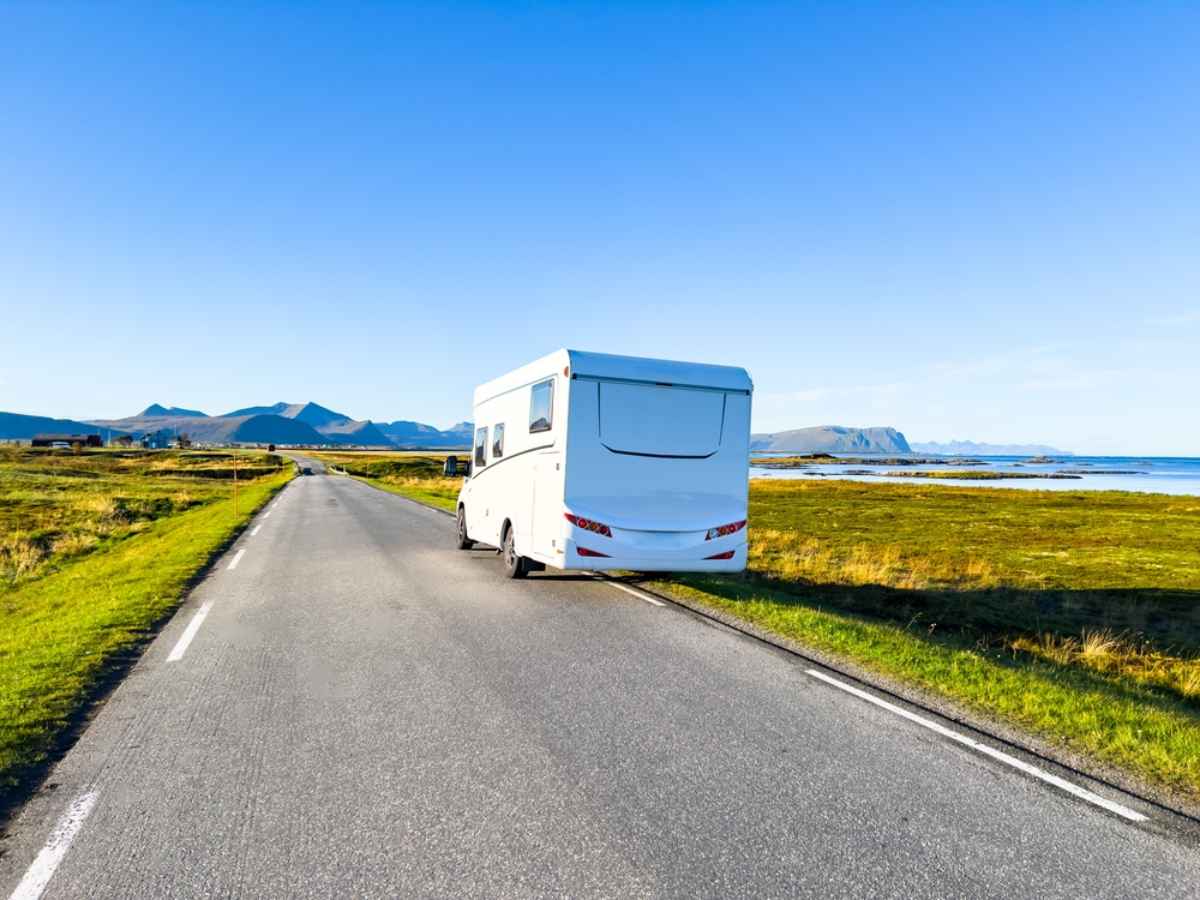
Gas, Groceries, & Dining: Where to Cut Costs
These are the expenses that can often make or break a neatly planned budget. So, to ensure you don’t go bust within your first week on the island, use the following advice:
- Gas doesn’t cost the same everywhere – not even at the same brand of gas station! So, do proper research into where to find the best deals, and only refuel there.
- Gas stations become few and far between the more remote you go. This is because of the cost of getting the gas to these regions in the first place, and, let’s face it, one can hike up the prices a bit with this type of supply and demand. So, it will always be better to fuel up before you hit these extremely remote areas.
- Always take advantage of discounts. Your rental agent might have struck a deal with a few local businesses and can hand you vouchers or a tag you can use at gas station pumps. If you purchase the Camping Card, it will also come with a few gas discounts.
- Cooking will also always be the cheaper option compared to dining out here in Iceland, so save those outings for special occasions and special local cuisine.
- When going grocery shopping in Iceland, the affordable go-tos (even for locals) are Bonus and Kronan.
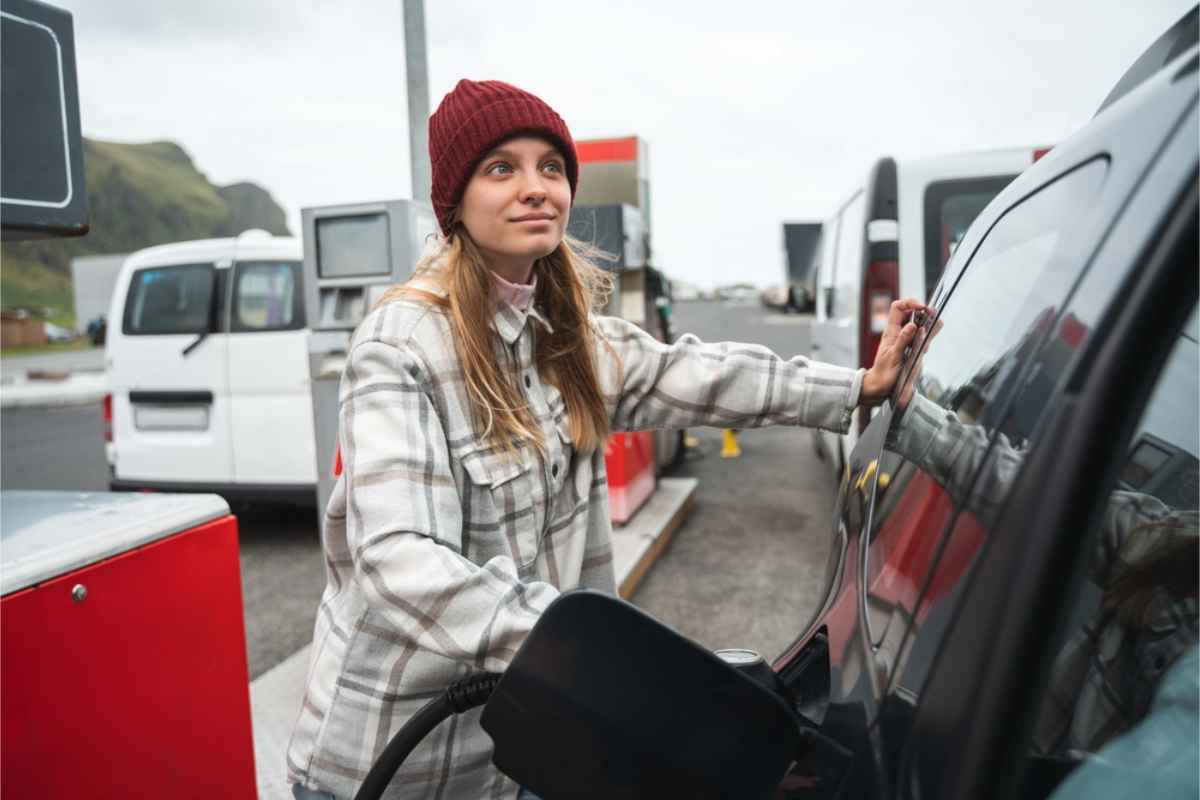
Hidden Fees & Unexpected Expenses to Watch Out For
You will find many things to see and do here in Iceland that won’t cost you a cent. But if you plan on going to places or partaking in activities that will cost you, you need to ensure you have this included in your budget. A few hidden costs you may not have thought of are the following:
- Paying tolls. Yes, there are certain roads in Iceland that have tolls, but these are not super expensive and are easily payable online; you just need to budget for them.
- Paying for public toilets. Public toilets can be found at most attractions and venues, but some will require paying a fee before you can use them.
- Paying for parking. Some parking lots, whether in the city or at local attractions, will charge a small parking fee. These can usually be paid on-site or online, and although minimal, can add up and put pressure on a budget if one is not prepared for these additional costs.
Staying Safe on Icelandic Roads: Weather, Speed Limits, & F-Roads
If this is your first time on the island, you’ll need to keep the following in mind when it comes to road safety:
- As with anywhere else in the world, you must ensure you keep to the rules of the roads. This includes keeping to speed limits (which may be different from what you’re used to), understanding Iceland’s road signs (which, once again, may be different from the ones back home), and never parking alongside the road or anywhere else that’s not a designated parking spot.
- Even if you’re not traveling the country during our harsher winter months, our weather can be fickle here on the island. So be sure to keep an eye on the Vedur website so you’re not completely caught by surprise.
- Also, keep a close eye on the Umferdin website for any updates regarding the roads (whether impacted by weather, annual closures, or other unforeseen circumstances).
- When planning your road trip in the more remote areas of the Highlands and the Westfjords, remember that you’ll more than likely be traveling on our F-roads. This means that you’ll have to plan your trip for the summertime (essentially the only time these roads are open), and you must have a 4x4 (a legal requirement for these roads).
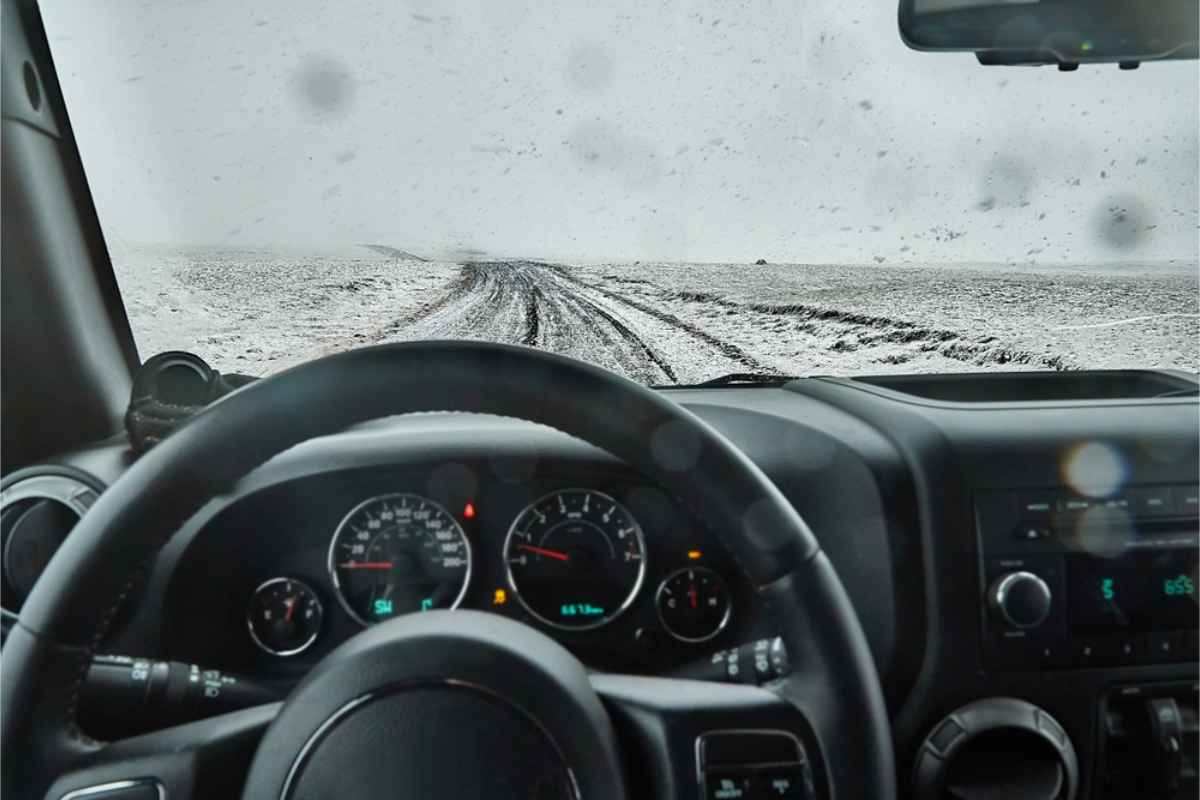
Vanlife Challenges: Showers, Bathrooms, & Other Realities
If this will be your first time road-tripping in a van, there are a few practicalities you need to be aware of:
Where to Find Public Showers & Toilets in Iceland
While some motorhomes come fully equipped with bathroom facilities, your more compact models may come without. Here’s how to navigate your hygiene:
- Most campgrounds will have communal bathrooms and showers, which are included in the price of your camping.
- Please don’t use our pools or hot springs as your bathtub. Swimming etiquette here in Iceland requires you to take a proper shower beforehand. So, in that sense, you could probably take advantage of the showers at these venues (but please be considerate of others).
- Some (albeit very few) gas stations offer campervanners the opportunity to use their public bathrooms and showers. These are usually gas stations that offer overnight parking (similar to truck stops).
Water & Waste Management in a Campervan
Water and waste are key elements you’ll need to deal with when out on a campervan adventure. Here are the best ways of managing them:
Fresh Water
As mentioned, Iceland has some of the purest water in the world, so whenever the topic of water comes up, the answer will mostly be “only a tap away.” In terms of finding clean water to use, you’ll find plenty of taps all across the country after initially filling up at your camping spot.
If you don’t have kitchen facilities in your camper, many campsites also have communal kitchen facilities where you can find fresh water to cook and clean with. Even if you have kitchen facilities in your camper, it’s advisable to rather use the campgrounds to save your camper’s water supply.
Waste Disposal
You’ll be dealing with two types of wastewater on your camper trip: grey water and black water. Grey water is the water you’ve used to shower and wash dishes in. Black water is your sewage. ALL of these need to be dumped at designated dumping spots you’ll find at most campsites. Please don’t just dump these anywhere along the road; it’s not only terrible etiquette but could cause severe damage to the environment and our delicate ecosystem.
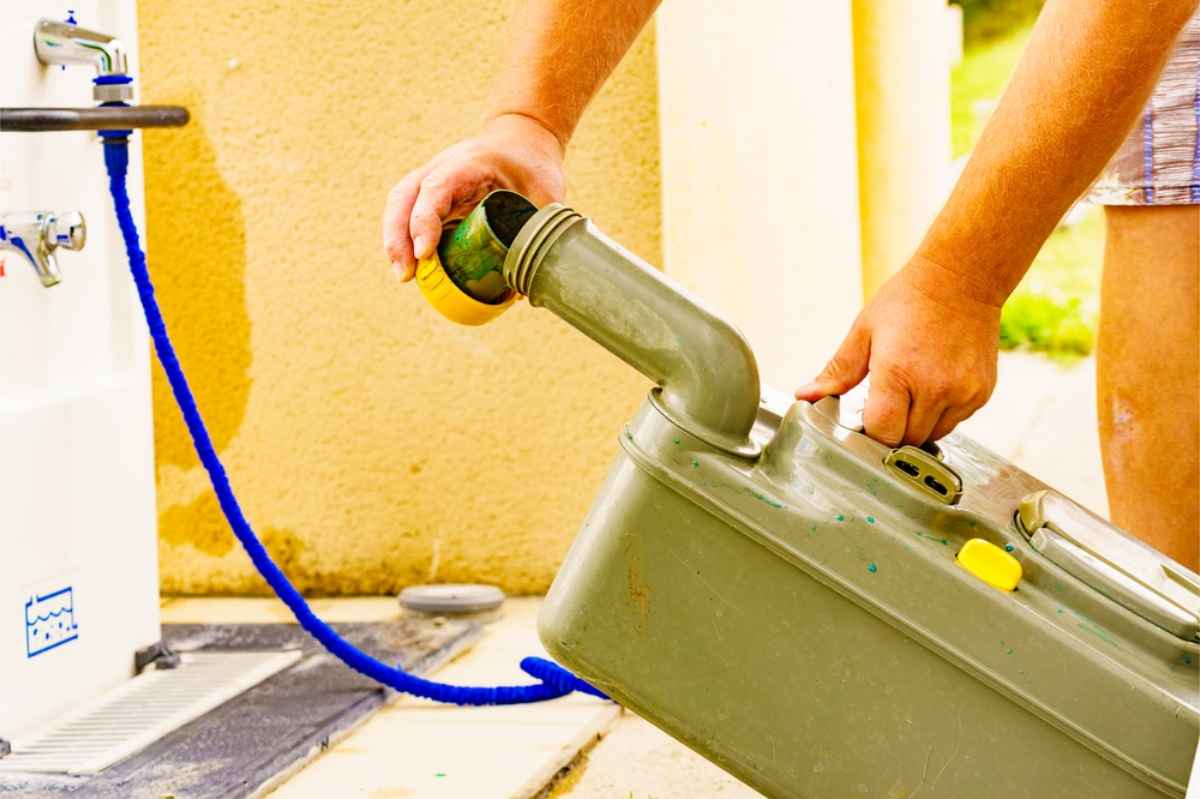
Staying Warm & Dry: Tips for a Comfortable Van Experience
Iceland’s winters can be harsh, and the weather is unpredictable in general. Here’s how to ensure you stay warm and dry throughout your trip:
- We already mentioned layering your clothes and waterproofing yourself, but to avoid dealing with wet stuff while missioning about, you’ll also need to bring waterproof bags for wet swimwear and towels. We also recommend bringing quick-drying towels rather than regular ones that’ll take quite a while to dry.
- Make sure your motorhome is sufficiently insulated and has sufficient heating if you plan on traveling during our colder months, especially winter. If you’re unsure, please remember to ask your rental agent about this.
- If you’ll be traveling throughout the colder months, or you know you don’t deal well with the cold, we suggest packing some thermal undies, bringing along a sleeping bag, or even buying a blanket here on the island to just give you that little bit of extra warmth.
Vanlife Luxury: Hot Springs, Lagoons, & Scenic Campsites
We already mentioned how vanlife can be the most convenient way of traveling the country and definitely the most comfortable way of going camping, but here are a few extra ways to add some additional “luxury” to your trip:
The Best Hot Springs to Visit on a Camper Road Trip
If you just want to spend a few days lounging around in some of our healing warm waters here on the island, there are plenty of go-to spots. Not only does the warm water soothe any achy muscles after a long journey and help you relax, but it’s been scientifically proven to have healing properties due to its high mineral content. For some of the best hot spring experiences in Iceland, opt for the following:
- Reykjadalur Hot Spring River - yes, that’s right, an entire river as a hot spring!
- The Blue Lagoon - Luxury geothermal pool venue where you can even buy beauty products capturing the healing powers of the water to take home with you.
- The Secret Lagoon - Also known as Gamla Laugin, this is Iceland’s oldest swimming pool. So, not just a relaxing visit, but also a historic one.
- Myvatn Nature Baths – Essentially the Blue Lagoon of the north.
- Forest Lagoon – Absolutely beautiful. Literally feels like you’ve found some hidden spot in a forest.
- Vök Baths – A modernistic take on the geothermal pool with a couple leaving you feeling like you’re actually swimming in the lake!
- Sky Lagoon – By far the geothermal pool with the most spectacular views (it’s not called Sky for nothing). Also, conveniently situated in the capital city of Reykjavik (walking distance from most accommodations).

Luxury Campsites with the Most Extra Comforts
If you’re looking for the campsite offering the most “extras,” we highly recommend the following:
Final Thoughts: Why Renting a Camper is the Best Way to See Iceland
We’re sure by now the answer is clear. A camper leaves you in complete control, offers the ultimate freedom and flexibility, and can get you as close to the action as you can possibly get here in the Land of Fire and Ice.
While there are a few things to vanlife that may initially be a bit of a challenge to newbies, such as managing waste, the weather, etc., it’s easy to get used to if you do your homework beforehand and prep and plan accordingly. Road-tripping through Iceland offers once-in-a-lifetime experiences that make for an unforgettable adventure. So, what are you waiting for? Time to pack your bags and hit the road to experience vanlife in Iceland for yourself.

